Finally just going to try it and see what happens. Updates + pictures as I go.
Soaker: Combine and occasionally stirred for 3 hours, or until dough is fully cohesive.
- (500 ± 10) g CM 12% Red Hard Red Wheat Berries, Twice milled (Mockmill), no sift.
- (400 ± 5) g Tap Water, Lukecold
- AFTER COHESIVE: Knead in (11± 1) g salt.
Leaven:
- (100 ± 2) g 50% Pasta Madre fed with KAF AP night before.
- Mix with (50 ± 10) g very warm water right before incorporating with Soaker
Final Dough:
- 100% WWF
- 20% Stiff Leaven
- 2.2% Salt
- 90% Hydration
Note: Calculating from raw ingredients, this is a 84% Hydration dough! The water added to the stiff leaven throws things off ;)
_____________________________________________________________________________________________
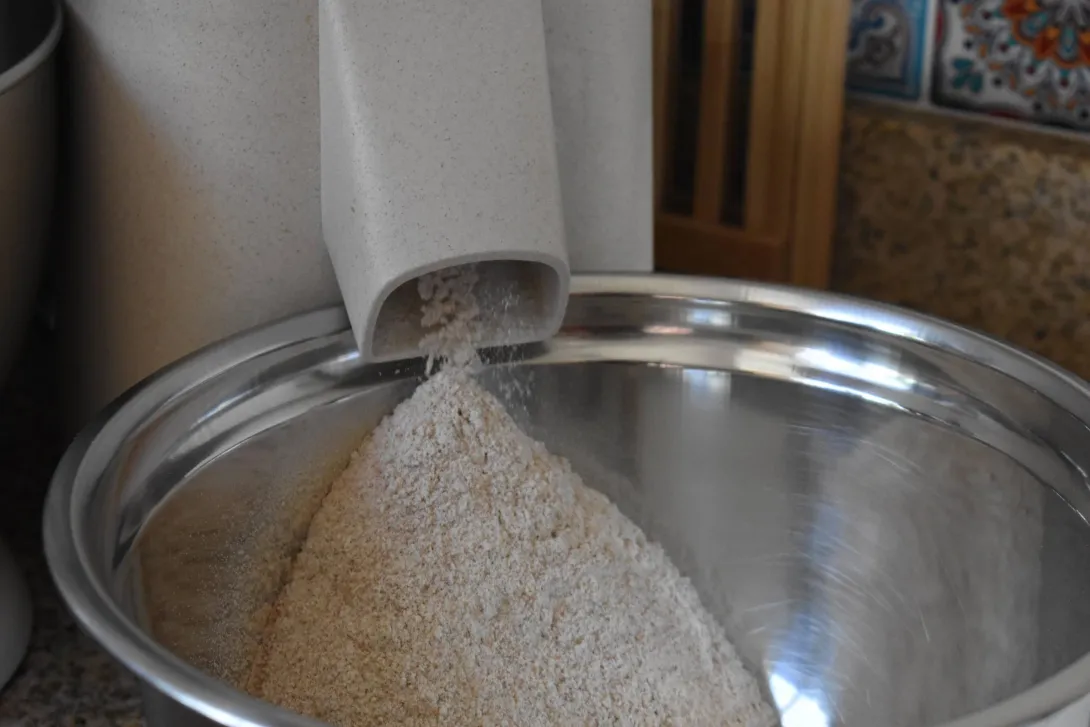
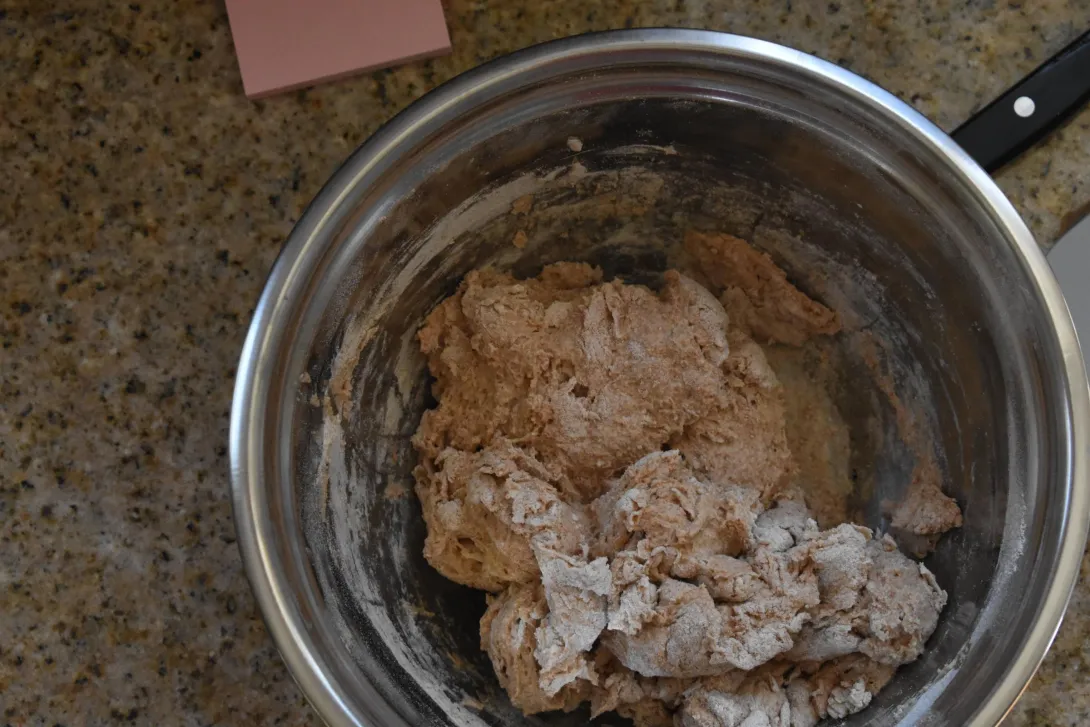
Fresh Milled flour and just-mixed soaker.
_____________________________________________________________________________________________
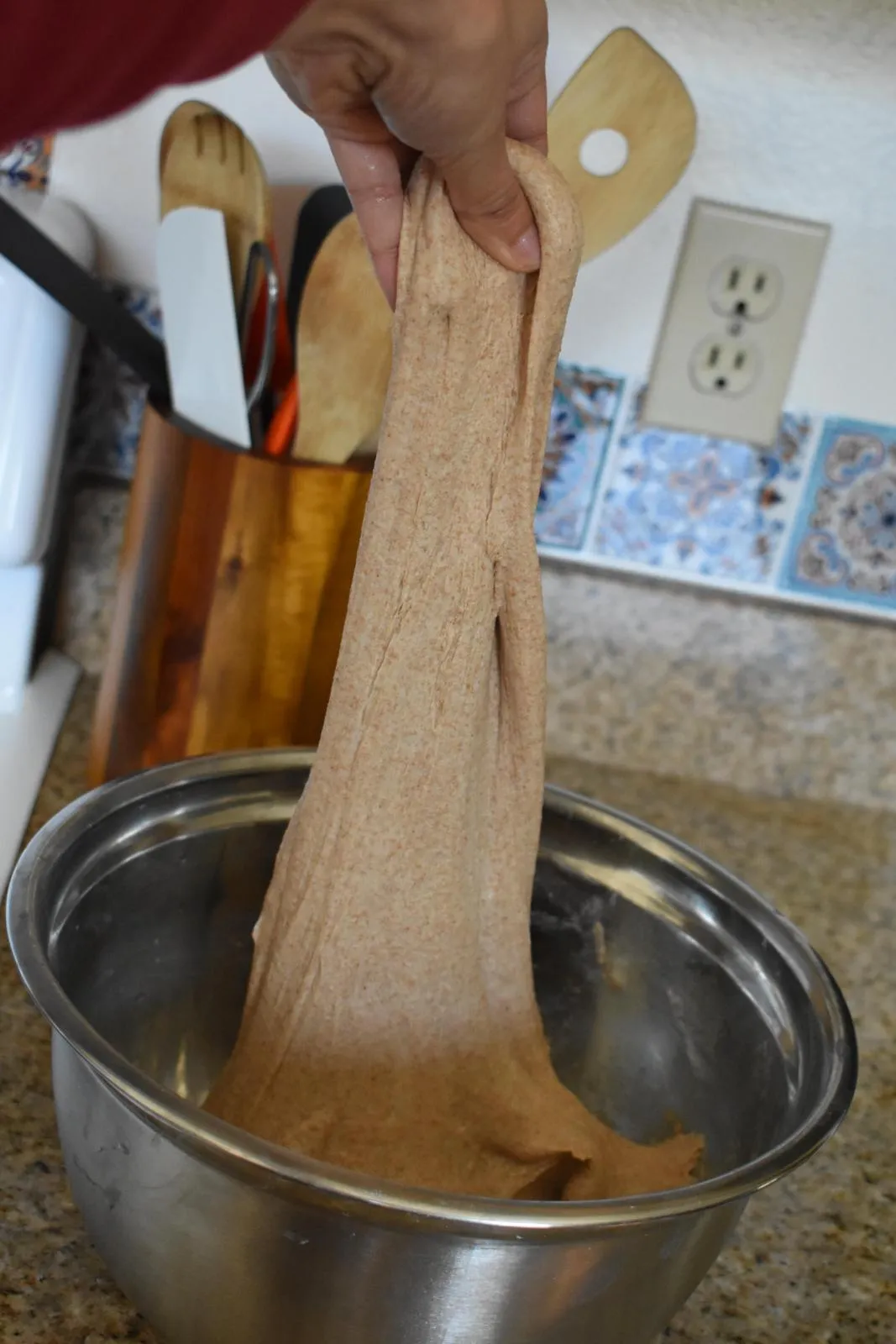
Soaker after 3 hours + 3 stirs: Pinching and pulling on a small bit can lift the entire dough out of the bowl cleanly without ripping. I consider this hydrated enough to add my salt and begin bulk
_____________________________________________________________________________________________
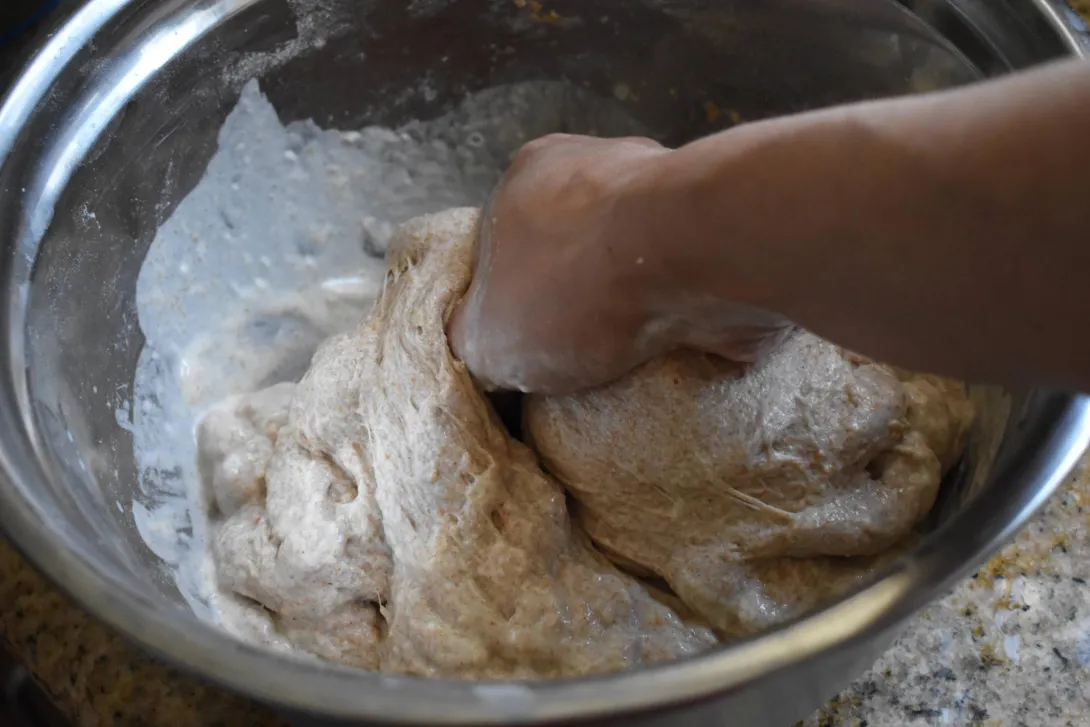
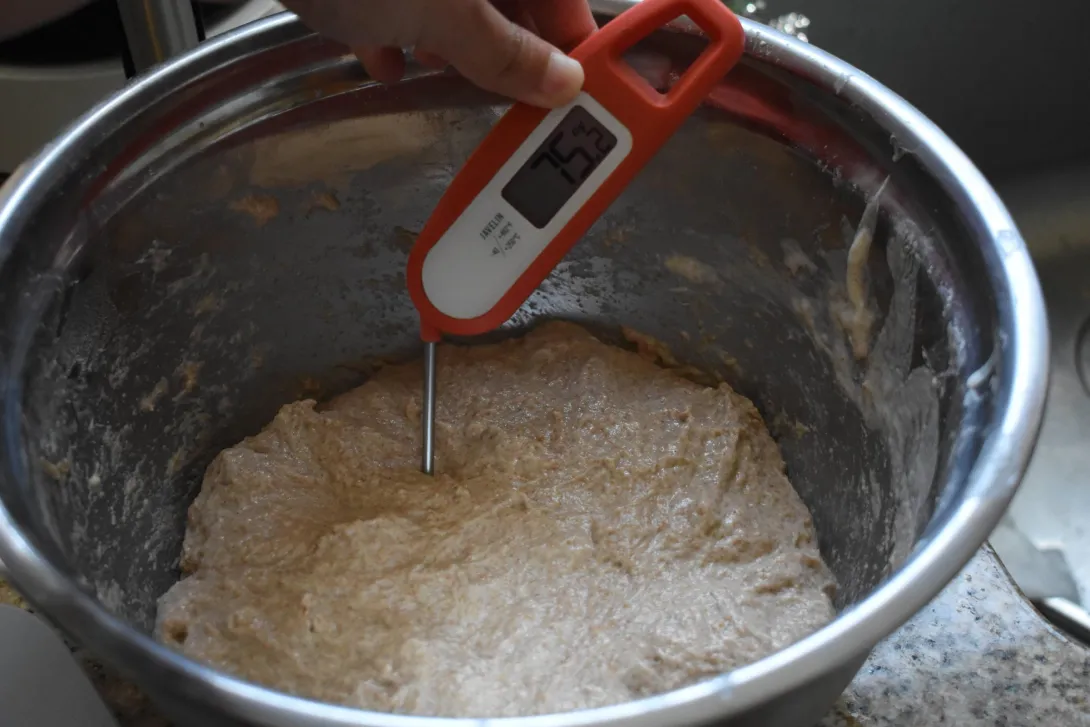
Mix in the Leaven well. Final dough temp is 75F, which is about what I want since WW fermentation can get a bit crazy
_____________________________________________________________________________________________
Dough goes in the proofing container, and is folded up to one side. As the gluten relaxes, it stretches itself via gravity. I do a coil-fold when it nearly covers the floor of the container, about every 30 minutes.
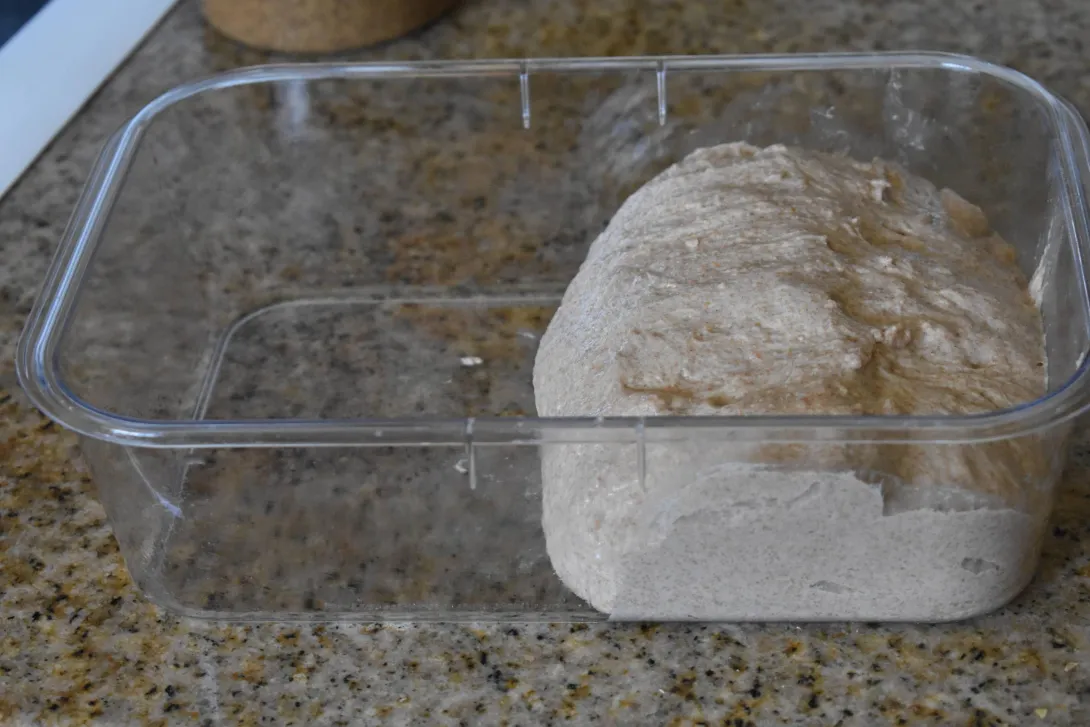
Coil 1: 1:45 PM
Coil 2: 2:15 PM
**Work Meeting :( **
Coil 3: 3:15 PM
Coil 4: 3:40PM
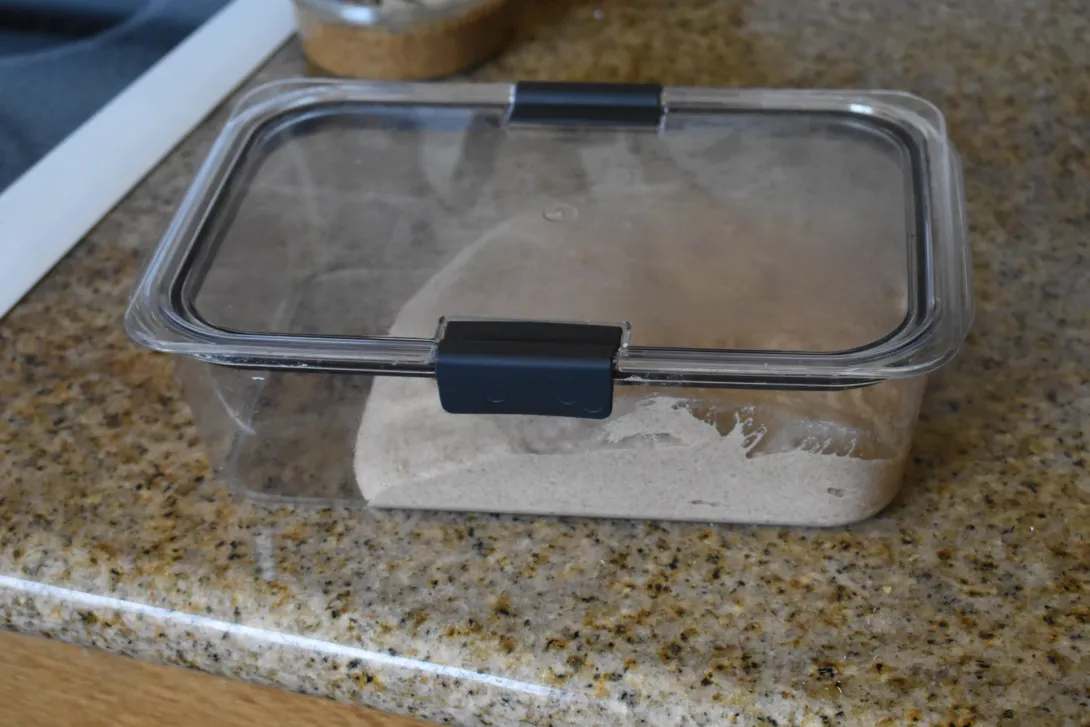
At 3:50PM I give the dough one last coil foil because I notice that it is puffy enough to start taking up its own slack as it ferments. I will watch the dough and divide it when it jiggles.
_____________________________________________________________________________________________
Divided dough at 4:50 into two 500g Boules. Let them rest until 5:15, and proceed to final shaping (1 batard, 1 boule because I only have one of each banneton lol)
The batard is proofed in a box at 78F until ready to bake.
The boule is proofed in a box at 78F until 5:55 ( 40 minutes) and the n placed in the fridge for baking tomorrow.
_____________________________________________________________________________________________
5:55 S.O. has commandeered the oven to roast a chicken for dinner ??
Will try reducing temp of the batard proof to 70 so it can last a little longer before baking
_____________________________________________________________________________________________
Finally got the Loaf in at around 7:25. Baked in an oven preheated to 500F with icecubes at 450F until 7:38, after which I vented the steam and lowered the temp to 400F for about 25 minutes. I shut the oven off and let the loaf and oven cool together with the door cracked
Loaf 1 Analysis:
This loaf had only very slight oven spring, which led me to worry it would be a brick upon cutting. When I removed the loaf from the oven, I felt how light it was and became less worried :). Without further ado:
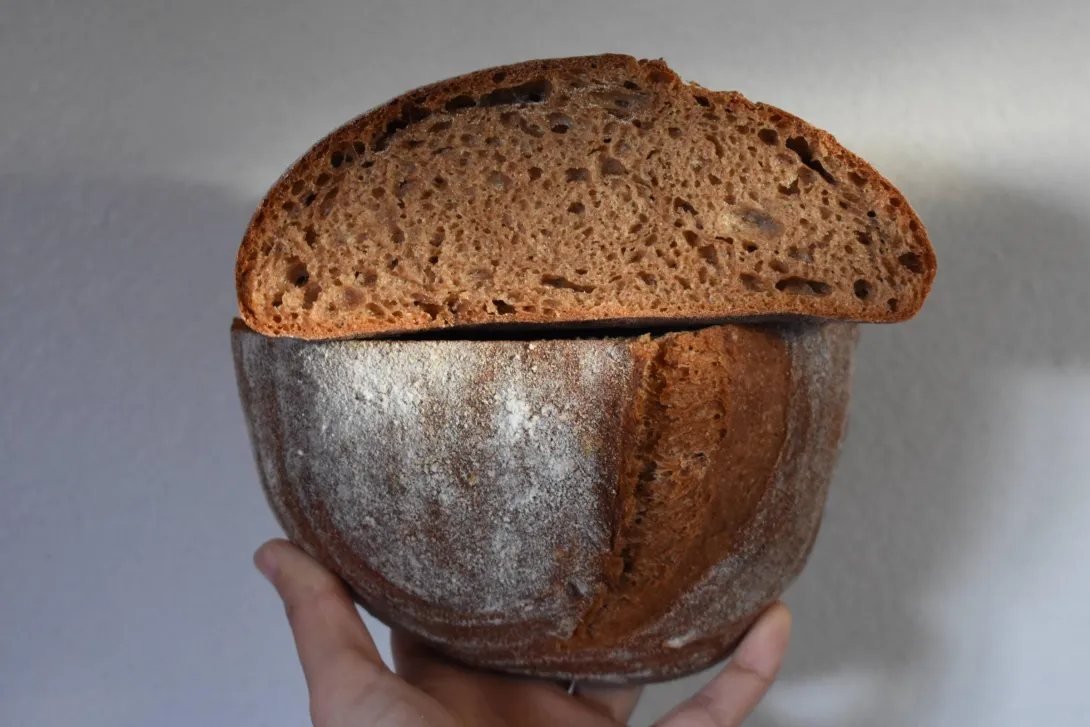
The crumb is not the best. It doesn't have the irregular holes granted by extreme oven rise. But the loaf is certainly not "dense"!
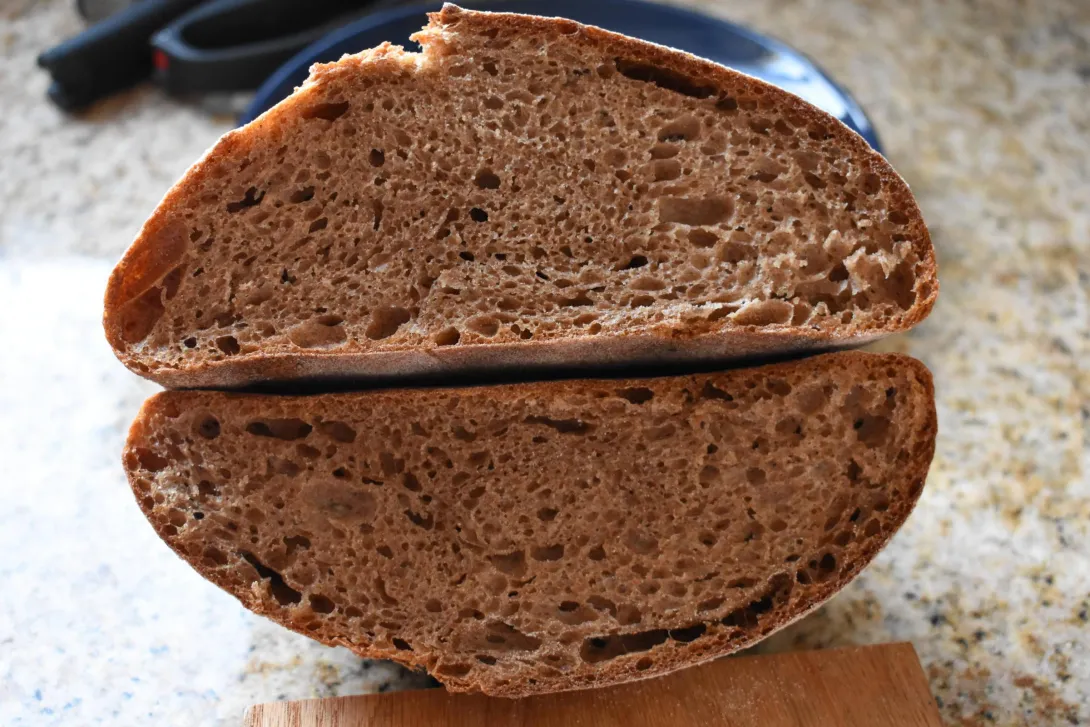
It easily squishes, and the interior is VERY soft and aerated. (Note the loss of crust, in support of hypothesis 1 below)
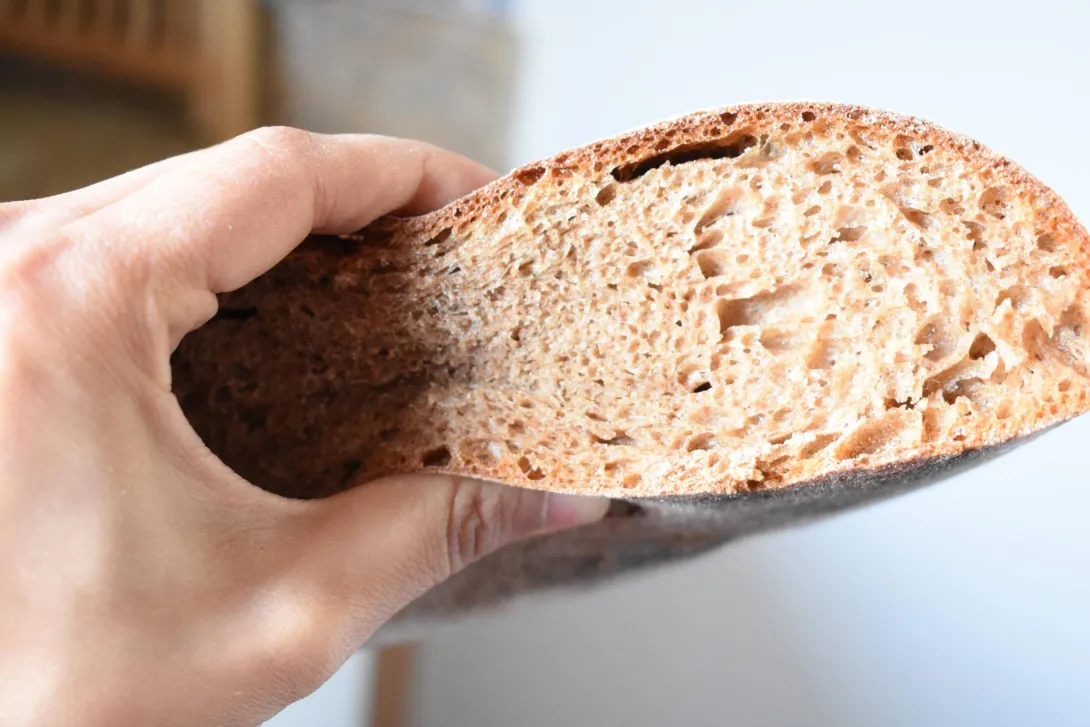
But let's slow down, I'm not taking a victory lap yet! Quite the opposite! This bread is a mystery that needs to be solved ?
Why is the crumb soft and yet "closed"? I don't believe it's under proofed -- this bread proofed for longer than my 80%WW and it doesn't have the characteristic intra-hole density and gummy quality. In fact, the crumb seems uniformly aerated, almost like a soft sandwich loaf.
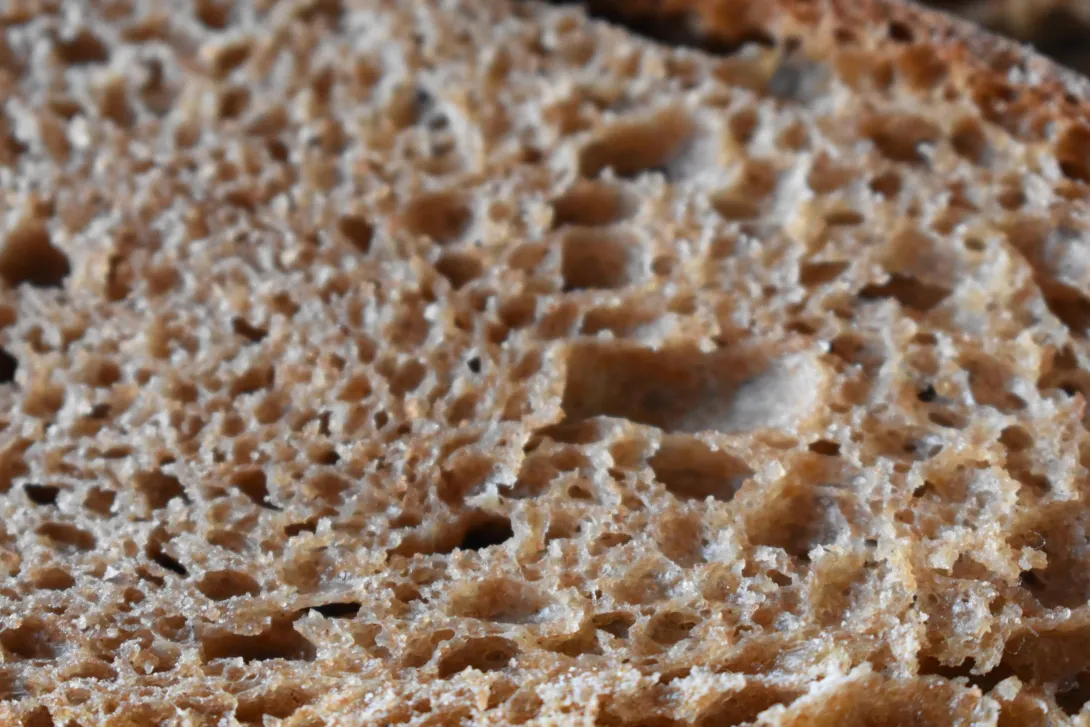
This brings me to consider that, in this 100%WW bread, the interior is not fully expanding for one reason or another. Here are my top hypothesis:
- Water Content: WW Flour is notoriously thirsty, hiding 10% or more water in the germ and bran than white flour. Let's look at some physical facts about water:
- It has an incredibly high specific heat (relative to most organic compounds and oils) due to the extreme polar nature of the molecule. Translated into baking, this means it takes a lot of heat to produce an increase in temperature of water. In terms of our bread, all things held constant, this means that the average temperature within the very hydrated WW loaf is going to be significantly lower than the white loaf during the first 10-20 minutes of baking. This appears consistent with searchable baking experiments that show the crumb after baking at various temperatures. When the first 10 minutes of baking occur at temperatures of less than 400 for a white loaf, you essentially lose the big irregular holes. The hydration of the WW seems to suggest that the minimum baking temp for big open crumb is probably a lot higher. If this is a contributing factor, the solution is to bump up the oven temp to the max it will go for the preheat, and bake at 500+ for the first 8-10 minutes.
- It is dense, as anyone who has handled WW dough knows. The extra weight in the large starch is clearly going to have a detrimental effect on the overall rise. Unfortunately, I'm not sure that there is a way to circumvent this without materially changing the bread, e.g. adding enzymes to break the porous, hydrophilic complex starches down into simple sugars with no tertiary structure to hold water. One possible hack may be to do as much proofing in as low a temperature as possible, so that the starches and gluten are slightly more rigid, and can hold vertical growth better.
- Crust formation: The crust in WW bread may form faster/harder than its white counter part due to the bran and starch that interpenetrates the exterior gluten network. This would act like a Pullman pan and force the kind of crumb uniformity we are seeing. The solution to this would be to amp up the steam.
I still have the other loaf in the fridge. I'll bake him the same way so we can try to learn something!
_____________________________________________________________________________________________
I lied, I'm bumping the temperature!
Boule loaf loaded from fridge at 10:25 into oven preheated to 550.
Added ice and lowered temp to 515.
Lowered to 475 after 8 minutes
Lowered again to 400 after 10 more minutes. Opened oven door to vent steam for a bit.
Shut off oven after 15 more minutes, letting bread cool with oven door open
_____________________________________________________________________________________________
Loaf 2 Analysis:
HOLEY LOAF! I consider this hard evidence for the water-content & specific heat argument!! Reminder that I baked this at 515F in an oven preheated to 550. Look at how the crumb is open at the edges but closed deep in the bulk where the temperature rises much more slowly!!
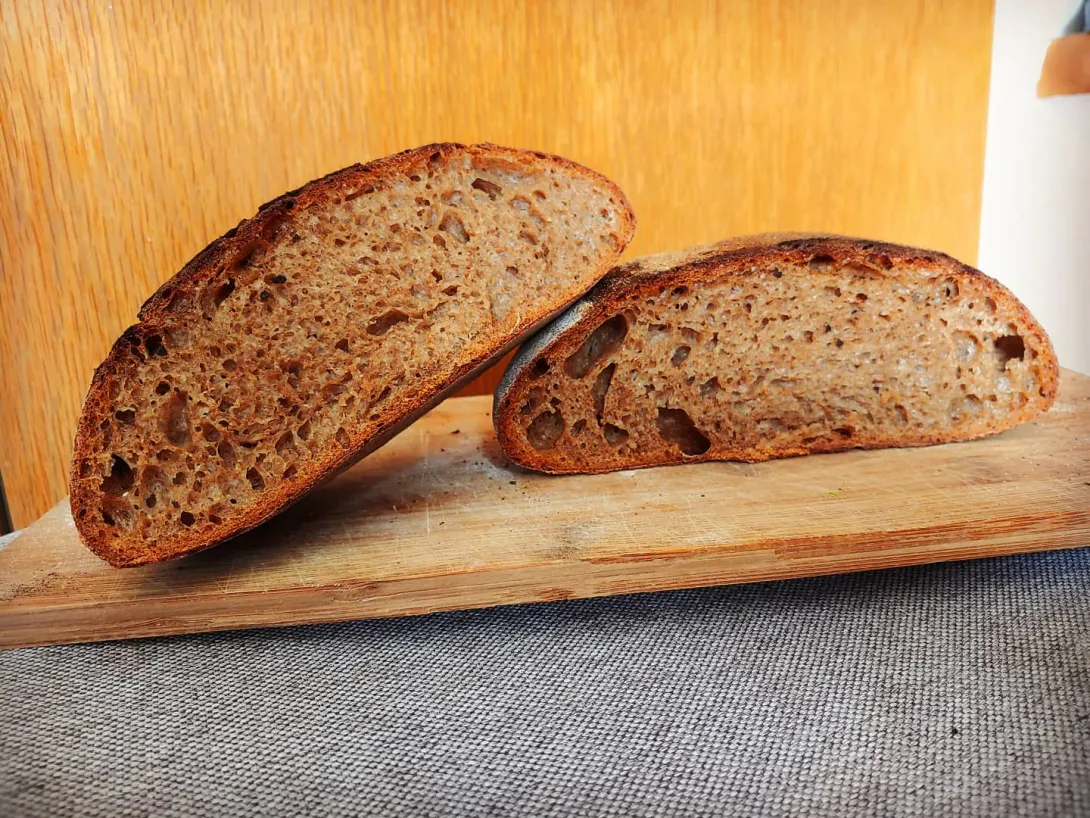
I think the next step on the 100%WW journey is clearly pushing the limits on baking temperature and shape.
EDIT: I started eating it and cut into a different part of the bread and wow! Surprise crumb shot anyone? Even better than the center cut!
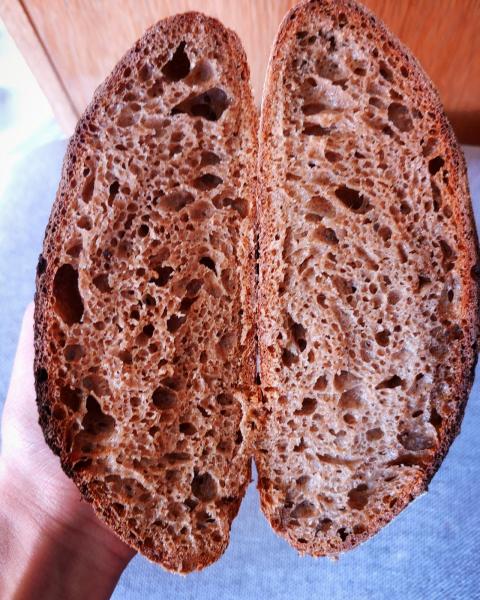
- kapawlak's Blog
- Log in or register to post comments
Excited to see your results with your freshly milled flour.
In regards to your hydration, if you mixed 400 g water with 500 g flour and then added 100 g of 50% hydration pasta madre, so to round off 33g water and 67 g flour. So hydration would be 76.5%.
Benny
I snuck in an extra 50 g of water with the pasta madre. Poor formatting on my part, sorry!
Ah ok, looking forward to your bake!
Thanks! Half way there. The first loaf has an interesting crumb. Whole wheat is such a mystery
You can see the gluten breakdown in the crumb, most visible immediately under the crust in the photo where you’re holding up both halves of the sliced bread. This tells you that this was overproofed a bit, not terribly but still overproofed.
Great bake. Loved how you could lift the entire dough out of the bowl without ripping at 3 hours.
The second loaf - looks like the larger alveoli are under the scoring?
And what was the flavour like, was it easy eating? I do like a soft crumb and if you can avoid the sour notes of high wholegrain that sounds to me like some victory lap is due.